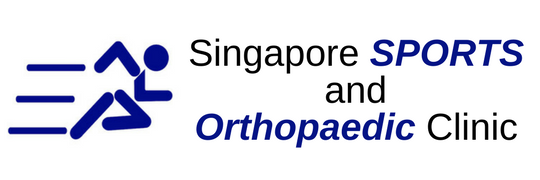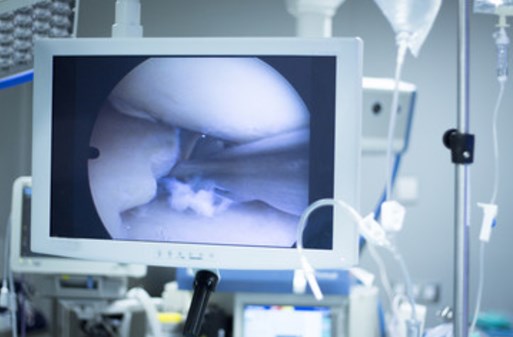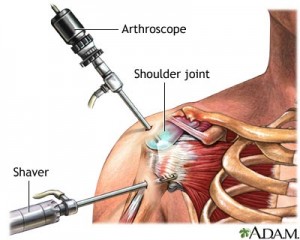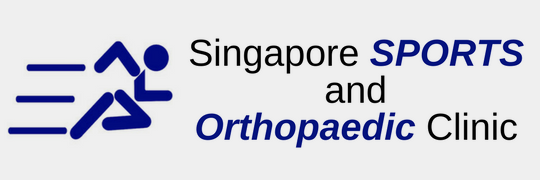Arthroscopy in Singapore
There are 2 main types of treatments for joint problems in Singapore, open Joint Surgery and Arthroscopy.
Arthroscopy is the more popular treatment in Singapore as it allows you to recover faster with minimal scarring and induces less trauma to cell tissues.
What is Arthroscopy?
Arthroscopy is a surgical procedure orthopaedic surgeons use to visualize, diagnose, and treat problems inside a joint.
The word arthroscopy comes from two Greek words, “arthro” (joint) and “skopein” (to look). The term literally means “to look within the joint.”
In an arthroscopic examination, an orthopaedic surgeon makes a small incision in the patient’s skin and then inserts pencil-sized instruments or the Arthroscope) that contains a small lens and lighting system to magnify and illuminate the structures inside the joint. Light is transmitted through fiber optics to the end of the arthroscope that is inserted into the joint.
Typically, the process is done on the back of the shoulder, knees or ankle to better understand the problem areas for a proper diagnosis.
Arthroscopy (also called arthroscopic surgery or keyhole surgery) is a minimally invasive surgical procedure in which an examination and sometimes treatment of damage of the interior of a joint is performed using an arthroscope, a type of endoscope that is inserted into the joint through a small incision.
Arthroscopic procedures can be performed either to evaluate or to treat many orthopedic conditions including torn floating cartilage, torn surface cartilage, ACL reconstruction, and trimming damaged cartilage.
Benefit of Arthroscopy
The advantage of arthroscopy over traditional open surgery is that the joint does not have to be opened up fully. Instead, for knee arthroscopy for example, only two small incisions are made — one for the arthroscope and one for the surgical instruments to be used in the knee cavity to fully remove the kneecap.
This reduces recovery time and may increase the rate of surgical success due to less trauma to the connective tissue. It is especially useful for professional athletes, who frequently injure knee joints and require fast healing time. There is also less scarring, because of the smaller incisions. Irrigation fluid is used to distend the joint and make a surgical space. Sometimes this fluid leaks into the surrounding soft tissue causing extravasation and edema.
The surgical instruments used are smaller than traditional instruments. Surgeons view the joint area on a video monitor, and can diagnose and repair torn joint tissue, such as ligaments and menisci or cartilage. It is technically possible to do an arthroscopic examination of almost every joint in the human body. The joints that are most commonly examined and treated by arthroscopy are the knee, shoulder, elbow, wrist, ankle, foot, and hip.
How is Arthroscopy Performed?
Arthroscopic surgery, although much easier in terms of recovery than “open” surgery, still requires the use of anesthetics and the special equipment in a hospital operating room or outpatient surgical suite. You will be given a general, spinal, or a local anesthetic, depending on the joint or suspected problem.
A small incision (about the size of a buttonhole) will be made to insert the arthroscope. Several other incisions may be made to see other parts of the joint or insert other instruments.
When indicated, corrective surgery is performed with specially designed instruments that are inserted into the joint through accessory incisions. Initially, arthroscopy was simply a diagnostic tool for planning standard open surgery. With development of better instrumentation and surgical techniques, many conditions can be treated arthroscopically.
Saline solutions are then pumped between the joints to separate the bones so the surgeon can take a better look.
Anesthesia is typically used during this procedure to numb associated pain.
Various Locations Arthroscopy Can Be Performed At
Arthroscopy is a pin-hole surgery that involves the surgeon making multiple small incisions in the region of interest and inserting small surgical tools, cameras and lights. The high resolution arthroscope is connected to a high definition television which will help the surgeon to see what is going on inside. Since the incisions made are much smaller than conventional open surgery, the recovery time reduces significantly and the risk of infection is much lower.
With so many apparent benefits Arthroscopy has over convention open surgery, why is it not used throughout the body? What are the various locations that Arthroscopy can be performed at? Read on to find out.
Hip Arthroscopy
Arthroscopy can be performed on the hip to treat hip disorders. Hip arthroscopy is performed to remove cartilage from the hip region as well as repair labral tears. In some cases, it can also be done to treat early stages of hip arthritis. As the hip is a complex joint, some problems can go undetected by x-rays and MRI and are only visible under arthroscopic conditions.
Diagnostic Hip Arthroscopy Video
Wrist Arthroscopy
The wrist is another place that Arthroscopy can be performed at. Wrist arthroscopy surgery is used to treat problems at the wrist joint which is essentially a complex structure with many ligaments connecting to 8 small bones. With such a complex structure, it is not really advisable to perform open surgery and risk injuring the soft tissues. Arthroscopy will allow the surgeon to see and treat the problem as well as to make accurate decisions.
Wrist Arthroscopy Video
Ankle Arthroscopy
The ankle is yet another common place that Arthroscopy is commonly performed on. Some frequent issues are cartilage damages which must be treated early to prevent the onset of arthritis. Arthroscopy is used to assess the damages and to repair it. Scar tissues from previous injuries can also be removed safely and precisely through Arthroscopy and that will help to reduce pain and swelling and allow a fuller range of motion.
Diagnostic Ankle Arthroscopy Video
Knee Arthroscopy
Arthroscopic surgery is a welcomed choice for most knee surgery due to the level of complication involved. Injuries such as an Anterior Cruciate Ligament tear have the option of either an open surgery or an arthroscopic one and most patients choose the latter. This is largely due to the lower risk involved and shorter downtime required post surgery.
Recommended reading: What is Knee Arthroscopy?
Diagnostic Knee Arthroscopy Video
If you have noticed, most Arthroscopic surgeries are Orthopaedic related and are performed at areas where the joints are injured. These joints are complex structures of the body and involve a higher risk than others. They are also used frequently and minimal downtime is preferred.
Side Effects of Arthroscopy Surgery
Arthroscopy surgery is a commonly performed surgery that helps to treat joint problems. The main difference from normal open surgery is that small incisions are made to allow a small camera and surgical devices to be placed at the joint. Since only small incisions are made, the recovery time will be shorter and there will be less potential complications as compared to open surgery. However as with all surgery, there are some effects after the surgery that are due to the surgery itself.
Decreased Range of Motion
After surgery, some patients may experience a decreased range of motion. This decrease in range of motion can be attributed to both the injury itself as well as the trauma during the surgery. Over time and physical therapy, the full range of motion can be obtained. However in severe and rare cases, patients may experienced stiffness for the rest of their lives.
Blood Clots
There is always a possibility that blood clots will form at the surgical site after surgery. This is due to the nature of the anaesthesia, causing the surgical area to be numb and devoid of blood. This can result in blood pooling in the bottom half of the body and result in blood clots after the surgery.
Infection
Although all the surgical instruments are sterile, there is still a low risk of infection in patients due to different reasons such as poor surgical techniques and inadequate sterilisation of medical personnel. Some pre-existing conditions of the patients can also increase the risk of infection such as diabetes. Infection can cause serious problems in patients and patients will need to consume antibiotics orally to be cured.
Further Injuries Due to Surgery
The entire surgery will be carried out in a careful and meticulous way. However, since arthroscopy surgery involves the use of surgical instruments passing through small incisions, some further damages or injuries could happen when trying to pass the instruments through. In unfortunate scenarios, the surrounding tissues and nerves could also be accidentally injured. However, this is a very rare thing to happen.
Hemarthrosis
Hemarthrosis is a rare effect of arthroscopy surgery. It is a collection of blood at the surgical site which can cause pain if there is a significant amount of blood. It will also lead to inflammation and infection.
Above are some of the side effects of arthroscopy surgery. Overall, it is a rather safe surgical method but it depends on the quality of the surgeon you choose as most of it is due to poor surgical techniques.
Recovery Time after Arthroscopy
The surgery is relatively simple and will not require inpatient processing if the patient is in good health. The small puncture wounds take several days to recover. However it is considerably shorter than the time to recover from a full open surgery. The operative dressing can usually be removed the morning after surgery and adhesive strips can be applied to cover the small healing incisions.
Although the puncture wounds are small and pain in the joint that underwent arthroscopy is minimal, it takes several weeks for the joint to maximally recover. A specific activity and rehabilitation program may be suggested to speed your recovery time and protect future joint function.
It is not unusual for patients to go back to work or school or resume daily activities within a few days. Athletes and others who are in good physical condition may in some cases return to athletic activities within a few weeks. Remember, though, that people who have arthroscopy can have many different diagnoses and preexisting conditions, so each patient’s arthroscopic surgery is unique to that person. Recovery time will reflect that individuality.
At the Singapore Sports and Orthopaedic Clinic, our orthopaedic specialists are ready to help you get back to the activities you know and love. Call us today for an appointment @ +65 9734 3087 to get a professional assessment of your condition & start your journey toward a better life!







